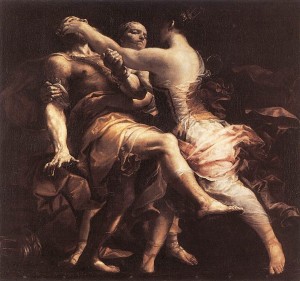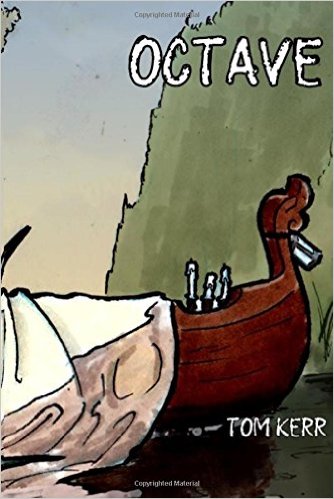O ADRESTIA WHERE ART THOU
I am writing this blog on the day that the newspapers and social media are reporting on the death by drone strike of the British terrorist named by the media as ‘Jihadi John’. This British IT company salesman and University of Westminster graduate had joined ISIL and been implicated in the beheading up to eight hostages. The hostages came from Britain, USA, Japan and Syria. The American drone strike is clearly an act of vengeance carried out by the west. It is revenge which is the theme of this blog, the third in the series about how Shakespeare uses characters from Greek mythology to great effect in Hamlet’s famous soliloquies. Hamlet’s second famous soliloquy is in Act 2 Scene 2 and begins;
‘O, what a rogue and peasant slave am I!’
At this point in the play he is full of self-reproach and anger at himself for not taking revenge on his uncle for killing his father. He is also full of hate for his uncle;
‘But I am pigeon-livered and lack gall
To make oppression, or ere this
I should have fatted all the regions kites
With this slave’s offal: bloody bawdy villain!
Remorseless, treacherous, lecherous villain!’
Why has Hamlet not yet taken revenge and killed his uncle, after all, there are no shortage of weapons or opportunities for Hamlet to act? The ghost of Hamlet’s father has visited him and told him that his uncle was responsible for poisoning his father.
Shakespeare wrote Hamlet in 1600 a time when witches and demons were believed to exist. The audience would have believed that the devil or evil spirits could take many forms and visit the living and try to trick them into carrying out his work. In the play Hamlet was not sure at this point if the ghost is his father or an evil spirit taking the form of his dead father encouraging him to commit a terrible crime. He needed more proof before carrying out the act of vengeance.
Let us return to the theme of this blog, revenge. In his soliloquy he says;
For Hecuba!
‘What’s Hecuba to him, or he to Hecuba?
That he should weep for her? What would he do
Had he the motive and the cue for passion
That I have?’
Who was Hecuba and why has Shakespeare used this woman from Greek mythology? On one level it is quite easy to explain. Hamlet had just met a group of travelling players who have come to court. Hamlet has enacted part of a play about the fall of Troy, enacting the murder of Priam the king of Troy. Hecuba was King Priam’s wife. She was taken as a slave by the victorious Greek army and was now being taken back to their homelands.
The story of Hecuba is told by Euripides and was written around 424BC. The play is set after the Trojan war, as the victorious Greek army make their way home. Hecuba, now a captive slave has paid a heavy price during the Trojan war. She had seen her husband murdered by Achilles’s son Neoptolemus also known as Pyrrhus. She had lost all of her sons during the long war including her two most famous sons Hector and Paris. She had had to endure the ritual humiliation that Achilles had inflicted on the Trojans by ill-treating Hector’s corpse after his death. Her daughter Polyxena has now been sacrificed by the Greek army to appease Achilles’s soul. Hecuba has certainly fallen from grace, once a powerful queen, now destined to a lifetime of slavery servitude and misery.

In spite of all this tragedy, Hecuba was consoled by the fact that her youngest son Polydorus was safe, or so she thought. King Priam had sent him, as they began losing the war, to live with Polymestor who was the king of Thrace. Unknown to Hecuba, Polymestor had murdered the boy for the gold he had brought with him and dumped his body in the sea.
The play opens with the ghost of Polydorus visiting her and explaining that he has been murdered by Polymestor for the gold he had brought with him and been dumped in the sea. Later she hears that Polydorus has washed up dead on the shore. Also, she has now had her daughter taken from her to be sacrificed.
These two events are the final straw for Hecuba who changes from a sad tragic character to a woman full of fury and intent on revenge. Hecuba is able to persuade Agamemnon to allow her to summon Polymestor to the camp so that she can inform him of more treasure buried at Troy that he could have.
Hecuba blinding Polymestor. Giuseppe Maria Crespi. Wikipedia.org
Polymestor arrives at the camp with his two young sons. Polymestor and his sons are led into Hecuba’s tent with the promise of more treasure. Once inside the tent she and her female accomplices overpower him and using his sword murder his sons and blind Polymestor with broach pins, leaving him alive to suffer for the rest of his life for his treachery. Agamemnon adds to his woes by banishing him to live the rest of his days on a deserted island.
Hamlet’s audience will see a number of parallels between the play they are watching and that of Euripides Hecuba. Both Hamlet and Hecuba have been visited by the ghost of a murdered loved one and been informed of who the killer was and why it was carried out. Both have had their circumstances altered by the crime. Normal succession should have led to Hamlet now being King of Denmark and Hecuba should be the queen in Troy. Madness, or at least perceived madness plays a part, Hecuba is full of fury and out for revenge and Hamlet feigns madness to cover his future actions. Both Hamlet and Hecuba plan their revenge carefully and finally get it at the end of the plays.
There is a key difference though, Hecuba takes decisive action after the body of her son washes up on the shore. Hamlet is still procrastinating and is not sure whether to take action. Note Hamlet uses ‘he’ and ‘him’ in the lines, but he is talking about himself. Hamlet is comparing himself with Hecuba and he clearly feels he is failing to measure up.
Finally, I will finish this piece with one last thought, it is a subject I will explore more fully in a future blog.
What’s Hecuba to Shakespeare, or he to Hecuba?
I believe the story of Hecuba has influenced Shakespeare much more than modern scholars of the bard give credit. Hecuba is mentioned in many of Shakespeare’s works and I think the story meant a lot to him and influenced a lot of his writing. Hecuba has become a symbol of grief and revenge, with grief being the catalyst for revenge. This is a theme that has been used in drama and literature from ancient Greek times, by Shakespeare and all the way to the present day.

Comments are closed.